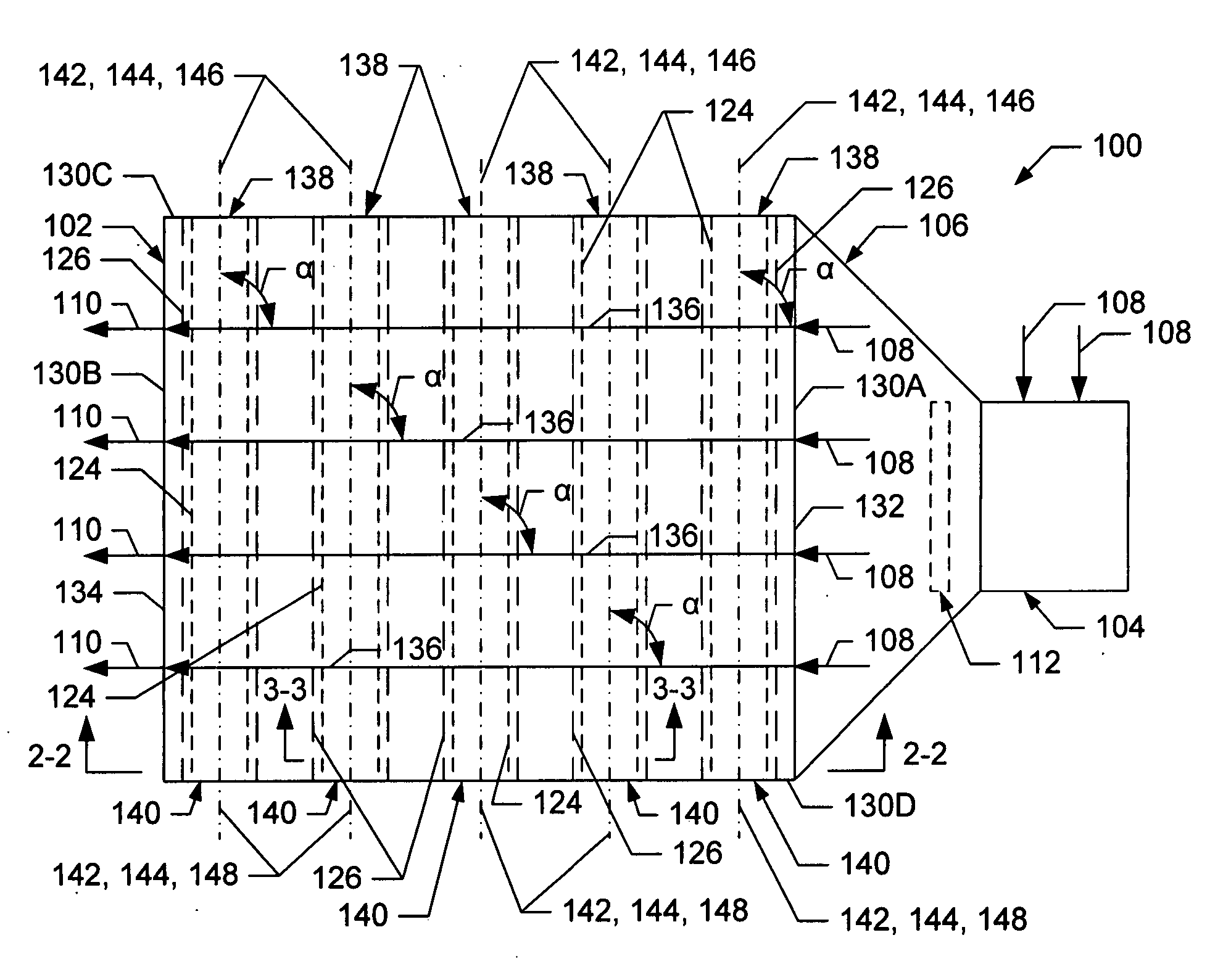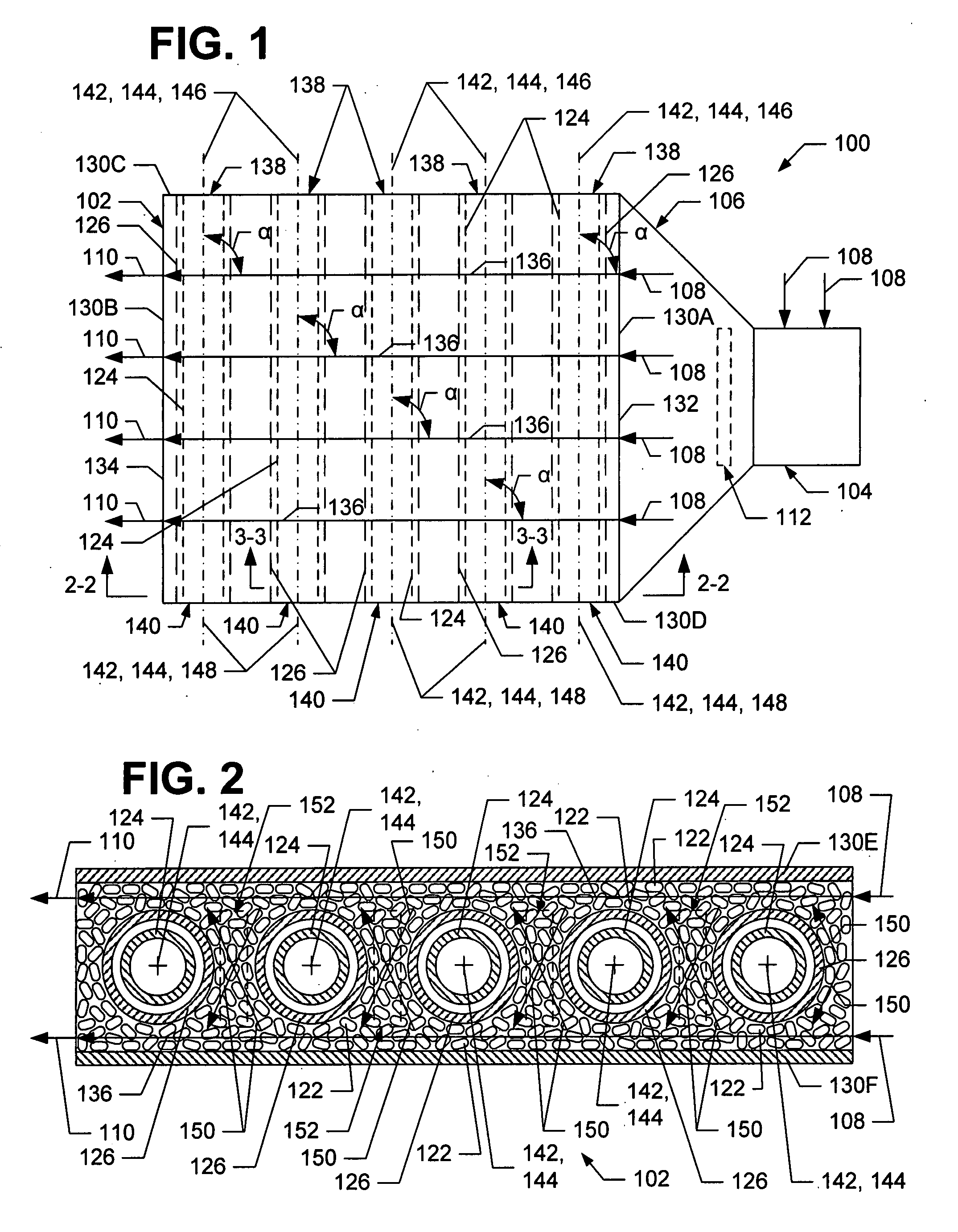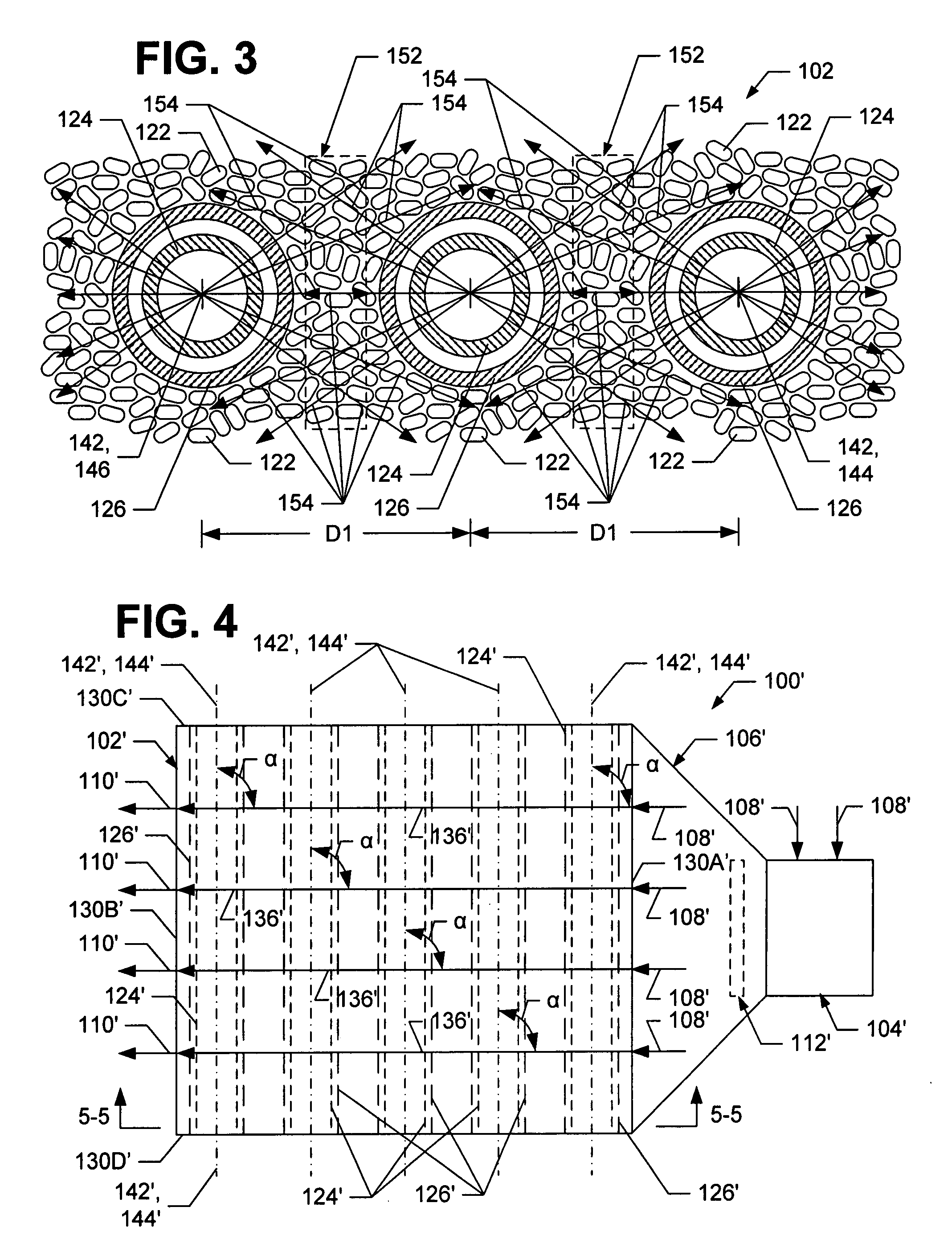Photocatalytic air treatment system and method
a photocatalytic and air treatment technology, applied in the field of air treatment systems, can solve the problems of not being able to achieve overwhelming success, not being able to achieve ultraviolet light overly successfully, and often being too short in duration, so as to increase the number of reaction sites, increase the number of such oxidation reactions, and increase the number of available reaction sites
- Summary
- Abstract
- Description
- Claims
- Application Information
AI Technical Summary
Benefits of technology
Problems solved by technology
Method used
Image
Examples
Embodiment Construction
[0022] Referring now to the drawings in which like numerals represent like elements or steps throughout the several views, FIG. 1 displays a schematic, top plan view of a photocatalytic air treatment system 100, according to a first exemplary embodiment of the present invention, for treating air by killing and / or mineralizing bacteria, viruses, mold, fungi, spores, mycotoxins, allergens, and other similar microorganisms or agents, and for oxidizing volatile organic compounds (VOCs), that may be present therein. The photocatalytic air treatment system 100 comprises a reactor bed 102, an air-handling unit 104, and a transition member 106 interposed between and connected to the reactor bed 102 and the air-handling unit 104. The air-handling unit 104 is adapted to pull untreated air 108 (i.e., indicated by arrows 108) from the environment in which the photocatalytic air treatment system 100 is present or from another source and to direct the untreated air 108 into the reactor bed 102 vi...
PUM
| Property | Measurement | Unit |
|---|---|---|
| irradiance | aaaaa | aaaaa |
| irradiance | aaaaa | aaaaa |
| center-to-center distance | aaaaa | aaaaa |
Abstract
Description
Claims
Application Information
 Login to View More
Login to View More - R&D
- Intellectual Property
- Life Sciences
- Materials
- Tech Scout
- Unparalleled Data Quality
- Higher Quality Content
- 60% Fewer Hallucinations
Browse by: Latest US Patents, China's latest patents, Technical Efficacy Thesaurus, Application Domain, Technology Topic, Popular Technical Reports.
© 2025 PatSnap. All rights reserved.Legal|Privacy policy|Modern Slavery Act Transparency Statement|Sitemap|About US| Contact US: help@patsnap.com



